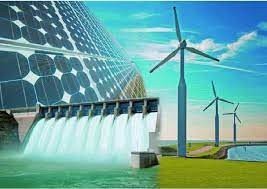
26
Feb
TOP 12 WWS States vs. Second Tier: Who’s Winning the Clean Energy Revolution?
The clean energy revolution is happening across the United States, but some states are leading the charge. The top 12 WWS states—California, Colorado, Hawaii, Iowa, Maine, Maryland, Massachusetts, Minnesota, New Mexico, Oregon, Vermont, and Washington—have enacted strong policies to support the development of wind, water and solar energy. But how do they compare to the second tier WWS states?
According to research from Elsevier, the #WWS states are pioneering the clean energy economy. Not only do they have some of the highest percentages of electricity from renewable sources, but also some of the lowest costs. For example, South Dakota gets 55% of its electricity from wind and 29.2% from hydro, and has the 7th-lowest electricity costs in the U.S. Among the top 12 WWS states, 8 are in the 13 states with the lowest costs.
The natural and policy environments in these states cultivate innovation, allowing forward-thinking companies to thrive. However, accessing capital to scale new technologies and business models remains a challenge, especially for groups like veterans, women, and minority business owners. Programs like the State Small Business Credit Initiative (#SSBCI) aim to address this need.
Successful Strong Policies In Top Tier WWS States
Here are some examples of strong policies that were successful in the top tier states that the second tier might emulate:
- California has a cap-and-trade program that has helped to reduce greenhouse gas emissions by 16% below 1990 levels.
- New York has a renewable portfolio standard that requires utilities to get a certain percentage of their electricity from renewable sources.
- Massachusetts has a clean energy standard that requires utilities to get 100% of their electricity from clean sources by 2050.
These policies have created jobs, reduced pollution, and combated climate change. Second tier WWS states can replicate these successes by enacting similar policies.
Here are some additional details about the successful policies from top tier WWS states mentioned above:
- California’s cap-and-trade program is a market-based system that sets a limit on the amount of greenhouse gas emissions that can be released into the atmosphere. Companies that emit greenhouse gases must buy permits to do so. The price of permits is set by the market, and it rises as the demand for permits increases. This creates an incentive for companies to reduce their emissions, as it will save them money.
- New York’s renewable portfolio standard requires utilities to get a certain percentage of their electricity from renewable sources, such as solar and wind power. This has helped to increase the use of renewable energy in New York and has created jobs in the renewable energy industry.
- Massachusetts’ clean energy standard requires utilities to get 100% of their electricity from clean sources by 2050. This is a more ambitious goal than California’s or New York’s standards, but it is achievable with a combination of policies, such as a cap-and-trade program, a renewable portfolio standard, and investments in clean energy infrastructure.
By enacting strong policies and investing in clean energy, second tier WWS states can create jobs, reduce pollution, and combat climate change. These states have the potential to be leaders in clean energy and climate action, and they should not be overlooked.
Second tier WWS states are as follows:
- Tennessee
- Texas
- Florida
- Ohio
- Arizona
- Colorado
- Missouri
- Nevada
- North Carolina
- Georgia
Second tier WWS states have the potential to be leaders in clean energy and climate action, but they are not yet on par with the top tier states. According to research from #Elsevier, the average percentage of electricity from renewable sources in second tier states is 25%, compared to 45% in top tier states. The average electricity costs in second tier states are also higher than in top tier states, with the average cost being 15% higher.
There are a number of reasons why second tier states have not yet made as much progress in clean energy as top tier states. One reason is that second tier states tend to have less renewable energy resources, such as wind and solar power. Another reason is that second tier states tend to have more conservative political climates, which makes it more difficult to enact strong clean energy policies.
Despite these challenges, there are a number of second tier states that are making progress in clean energy. For example:
- Tennessee has set a goal of getting 50% of its electricity from renewable sources by 2030. Tennessee has a number of renewable energy projects in the works, including a 100-megawatt solar farm and a 50-megawatt wind farm.
- Texas has also made progress in clean energy, and it is now the second-largest producer of wind power in the United States. Texas also has a number of incentives for renewable energy, such as tax breaks and rebates.
- Other second tier states that are making progress in clean energy include Ohio, Arizona, and Colorado.
By continuing to make progress in clean energy, second tier states can help to create a more sustainable future for the United States.
The clean energy revolution is an opportunity for businesses to grow and innovate. Companies that are able to develop and deploy clean energy technologies will be well-positioned for success in the years to come.
If you’re interested in learning more about the clean energy revolution, sign up for our Sustainable Investing Digest. Subscribe on LinkedIn https://www.linkedin.com/build-relation/newsletter-follow?entityUrn=7053058780464345088 We’ll send you regular updates on the latest trends, innovations and opportunities in the renewable, clean tech and water sectors.
#cleanenergy #renewableenergy #solar #wind #water #cleantechnology #sustainability #greenbusiness #impactinvesting #esg #ssbc